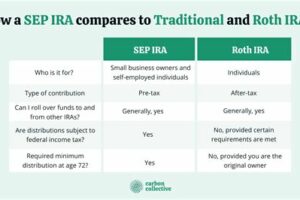Discover how a steady-state N balance approach can promote sustainable smallholder farming and reduce environmental degradation. Learn more here.
Are you interested in sustainable smallholder farming? If so, you may want to learn about a groundbreaking approach that could change the way we think about agriculture. A steady-state N balance approach is an innovative method for managing nitrogen inputs and outputs on farms, which can help small-scale farmers improve soil fertility, reduce environmental pollution, and increase crop yields. This approach takes into account the complex interactions between soil, plants, and microbes, as well as the social and economic context of farming communities. By adopting a steady-state N balance approach, smallholders can achieve a more balanced and resilient agricultural system that benefits both people and the planet.
One of the most pressing challenges facing the world today is how to sustainably produce enough food for a growing global population. Sustainable agriculture is the solution to this challenge, and a steady-state N balance approach can help smallholder farmers produce more while reducing damage to the environment.
To effectively implement the steady-state N balance approach, farmers must understand the principle of nutrient cycling. Nutrients such as nitrogen, phosphorus, and potassium move through the soil, plant, and animal systems in a continuous cycle. Nitrogen is particularly important for plant growth, but it is also highly mobile and easily lost through leaching, volatilization, and denitrification. To manage nitrogen effectively, farmers should use a variety of strategies such as crop rotations, intercropping, and organic fertilizers.
Legumes play a crucial role in the steady-state N balance approach, as they can fix atmospheric nitrogen in the soil, reducing the need for synthetic fertilizers and improving soil fertility. Incorporating legumes into cropping systems can increase nitrogen availability and improve yields. Conservation agriculture is another farming system that can enhance soil health and fertility while reducing environmental impact. This approach involves minimum soil disturbance, crop rotations, and the use of cover crops.
Livestock management also plays a critical role in the steady-state N balance approach, as livestock produce manure, which is a valuable source of organic fertilizer. However, improper livestock management can lead to nutrient loss and environmental degradation. Careful management ensures that manure is used effectively and efficiently. The use of organic farming practices is also an important aspect of the steady-state N balance approach, as it avoids the use of synthetic fertilizers and pesticides, which can harm the environment and human health.
Soil testing is an essential tool for managing soil fertility effectively. By testing their soil, farmers can determine the nutrient content and adjust their fertilizer application accordingly, reducing costs and improving yields. Building partnerships and sharing knowledge and resources can help smallholder farmers to adopt sustainable farming practices and improve their livelihoods.
Sustainable agriculture is a promising solution to the challenges facing the world today. The steady-state N balance approach is just one of the many strategies that smallholder farmers can use to produce more food while reducing negative environmental impacts. By adopting sustainable agricultural practices, smallholder farmers can improve their livelihoods, protect the environment, and contribute to a more sustainable future.
Once upon a time, in a small village nestled in the lush green hills of Africa, there lived a group of smallholder farmers who struggled to make ends meet. They faced numerous challenges, including soil degradation, climate change, and a lack of access to modern agricultural technologies. Despite their best efforts, they found it increasingly difficult to grow enough food to feed their families and earn a living.
One day, a team of agronomists arrived in the village with a new approach to farming that promised to help these smallholders achieve sustainable agriculture. This approach was called the Steady-State N Balance Approach, and it focused on balancing the nitrogen inputs and outputs of the farm to ensure that the soil remained fertile and productive for years to come.
The Steady-State N Balance Approach had several key principles:
- Nitrogen Fixation: The approach focused on using leguminous crops to fix nitrogen in the soil, rather than relying on synthetic fertilizers.
- Crop Rotation: Farmers were encouraged to rotate their crops to prevent soil degradation and maintain soil fertility.
- Composting: The approach emphasized the use of composting to provide organic matter to the soil and improve its structure.
- Reduced Tillage: By reducing tillage, the approach helped to minimize soil erosion and maintain soil structure.
- Biochar: Biochar was used to enhance the nutrient-holding capacity of the soil, improve water retention, and reduce greenhouse gas emissions.
The smallholder farmers in the village embraced this approach and began implementing it on their farms. They started planting leguminous crops, rotating their crops, composting, reducing tillage, and using biochar. Over time, they noticed a significant improvement in their soil health and productivity.
They were able to grow more food, earn more income, and improve their quality of life. They also saw a reduction in greenhouse gas emissions and a decrease in the use of synthetic fertilizers, which helped to protect the environment.
The Steady-State N Balance Approach had transformed their lives and given them hope for a sustainable future. They shared their success with neighboring farmers, who also adopted the approach and saw similar results.
From a farmer’s point of view, the Steady-State N Balance Approach had proven to be a game-changer. It had helped them achieve sustainable agriculture, improve their livelihoods, and protect the environment. They were proud to be part of a movement that was making a positive impact on their community and the world at large.
As we come to the end of this article, we hope that you have gained valuable insights into the concept of a steady-state N balance approach for sustainable smallholder farming. With a rapidly growing global population and increasing demand for food, it is imperative that we adopt sustainable agricultural practices that ensure food security for future generations.
By understanding the importance of nitrogen in crop production, farmers can take steps to manage their N balance and reduce the negative impact of excess nitrogen on the environment. This approach not only benefits the environment but also has economic benefits for farmers, as it reduces the need for costly fertilizers and increases soil fertility in the long run.
It is important to note that implementing a steady-state N balance approach requires a shift from traditional farming practices to more sustainable ones. This may require additional resources and support from governments and other stakeholders to ensure that smallholder farmers have the necessary knowledge and tools to implement these practices effectively.
In conclusion, the adoption of a steady-state N balance approach for sustainable smallholder farming is crucial for achieving a sustainable food system. By reducing the negative impact of excess nitrogen on the environment, we can ensure that future generations have access to nutritious and healthy food. Let us all take responsibility and work towards a sustainable future for all.
.
People also ask about A Steady-State N Balance Approach For Sustainable Smallholder Farming:
- What is a steady-state N balance approach?
- How does a steady-state N balance approach contribute to sustainable smallholder farming?
- What are the benefits of a steady-state N balance approach?
- Reduced cost of inputs such as fertilizers
- Increased soil fertility
- Reduced environmental impact
- Increased crop yields and income for farmers
- Improved resilience to climate change
- What are some strategies for implementing a steady-state N balance approach?
- Reducing fertilizer use and applying it strategically
- Using legumes or other N-fixing crops in crop rotations
- Reducing tillage to minimize soil disturbance and N losses
- Managing livestock manure carefully to avoid N losses
- Using cover crops to scavenge N and reduce leaching
- Is a steady-state N balance approach applicable to all types of smallholder farming?
A steady-state N balance approach is a farming method that aims to maintain a balance between the amount of nitrogen (N) that is taken up by crops and the amount of N that is lost from the soil. This approach involves minimizing N losses through leaching, volatilization, and denitrification while optimizing N uptake by crops.
A steady-state N balance approach contributes to sustainable smallholder farming by reducing the cost of inputs such as fertilizers and increasing crop yields. By maintaining a balance between N inputs and outputs, farmers can avoid over-fertilization, which can lead to environmental degradation and reduced soil fertility over time.
The benefits of a steady-state N balance approach include:
Some strategies for implementing a steady-state N balance approach include:
A steady-state N balance approach is generally applicable to all types of smallholder farming, although the specific strategies used may vary depending on local conditions and farming practices. Some farmers may need to adjust their cropping patterns or use different fertilizers to achieve a steady-state N balance.






